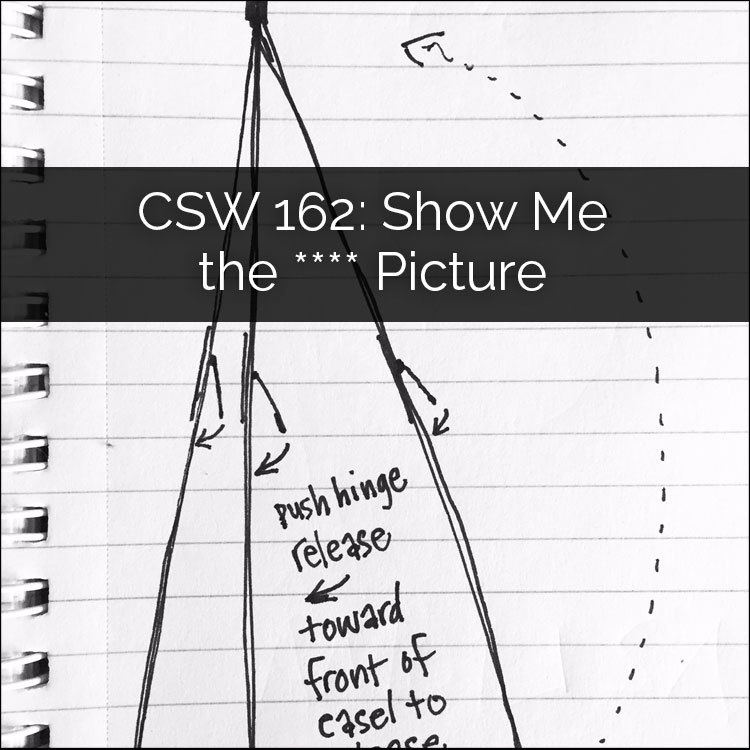
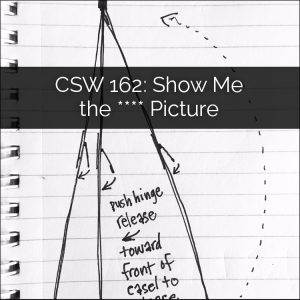 I felt like such an idiot.
I felt like such an idiot.
I was supposed to be on my way to San Francisco, for Creative Sunday Lab — a half-day creativity retreat hosted by Jenni Heffernan Brown of The Type A Creative, sort of like the day-camp version of my Create & Incubate Retreat, where creatives could gather in a beautiful office space to write, or draw, or make music, or do whatever kind of creating they wanted, in the company of others for a few hours.
But I’d recently taken delivery of a brand-new (to me — actually, a used) Da-Lite D305 flip chart easel, and because it was used it didn’t come with a user manual, and I couldn’t for the life of me figure out how to fold the darn thing up!
I’d already spent at least ten minutes trying to figure it out on my own — I mean, how hard could it be, right? I’m an intelligent person. I inherited my dad’s engineering brain.
But I couldn’t figure it out!
So finally I booted up my Mac and turned to Google.
But it turns out that finding a Da-Lite D305 easel user manual is not not so easy!
I can feel my travel time to San Francisco ticking away as I search the interwebs. I’m getting hot, and my chest is growing tight with tension. I hate being late.
Eventually, paydirt. I find a link to a PDF instruction manual!
Only to be disappointed when this is the entirety of its instructions:

Hinge release? What hinge release?
I run downstairs, looking wildly for the hinge release to push in, but again, I feel like an idiot.
Pictures, people! I need pictures!
Only after a lot more digging did I find this Parts List — completely separate from the instruction manual, mind you — which shows an arrow pointing to the “leg release.” Not the “hinge release,” which is what the instruction manual refers to, but the “leg release.”

That image wasn’t very good, but it was enough for me to finally figure out what I needed to do to fold up the darn thing.
Something which should have taken 90 seconds had taken about thirty minutes.
Ridiculous!
How could this waste of time been prevented? I’ll tell you how: simple pictures.
Consistent terminology would have helped, too. But a simple picture on the instruction manual would have made it so clear what I needed to do.
I drew a simple sketch in about two minutes to show the steps involved in folding up the easel. Something this simple printed on the worse-than-useless instruction manual would have saved me a ton of time and a massive headache on Sunday.
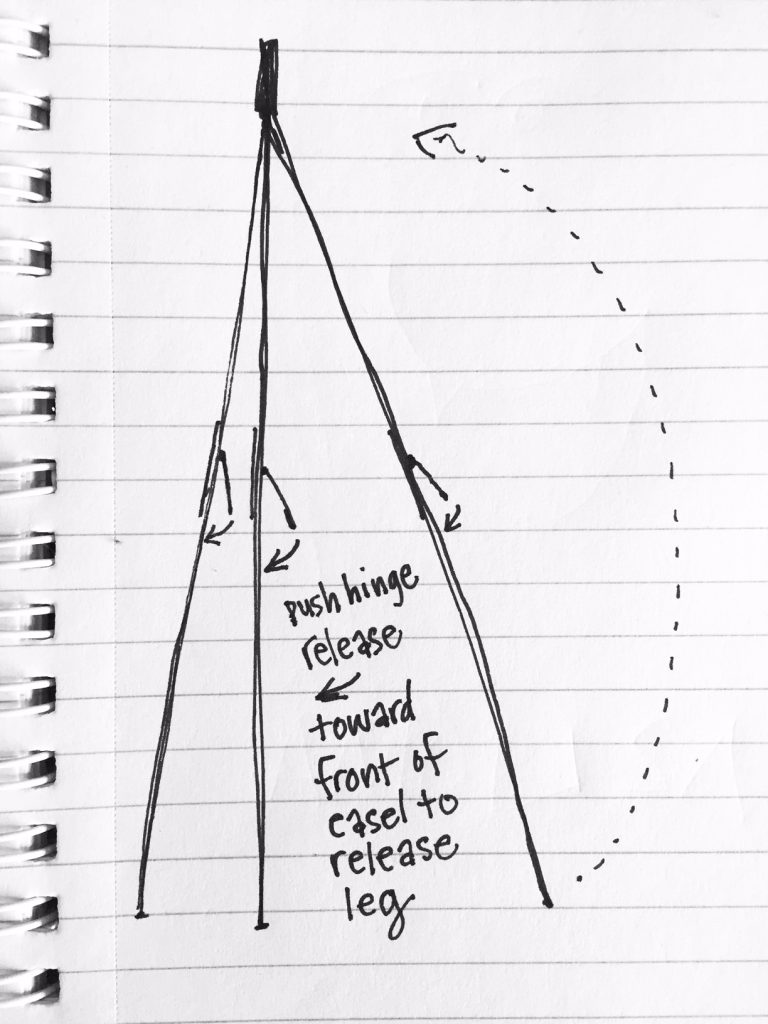
I share this, because visual literacy is something that is given too little thought by too many in today’s world (and was clearly given too little thought by the folks putting together the user manual at Da-Lite – ironic, since as a manufacturer of projection surfaces, screens and accessories, Da-Lite is in the business of visuals!)
What does this have to do with you and your life and work?
Well, the next time you want to communicate something, consider drawing it.
And I know, you’re probably thinking, “But Melissa, I can’t draw!”
Here’s the thing: you don’t have to be an artist to communicate visually!
Have you ever played Pictionary? Who’s the best at it? It’s usually not the most talented illustrator; it’s the person who can communicate the concept the most quickly and efficiently. Not the most realistically.
I have a friend who was telling me a story about being in Spain, and trying to buy some charcoal in a market, like a little grocery store, in a small town, where nobody spoke English. She knows a tiny bit of Spanish, but she couldn’t remember the word for charcoal. So she spent the next twenty minutes trying to pantomime anything that might get them to understand “charcoal.”
If she’d had a pad of paper, she could have drawn flames coming out of black rocks, with an arrow pointing to the rocks.
Here’s my 20-second “charcoal” sketch:
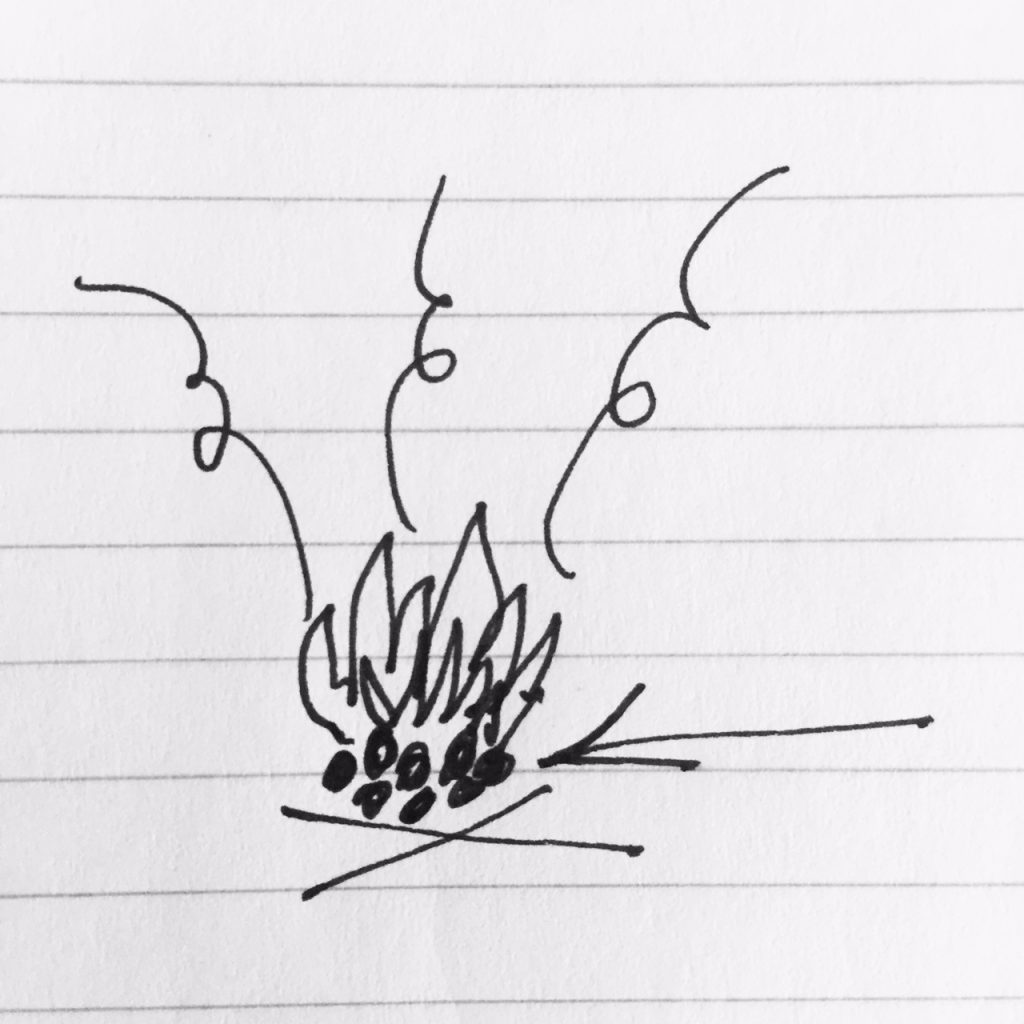
It’s not going to win any awards, but visual communication doesn’t have to win awards, it simply needs to get the message across!
Dan Roam, evangelist for visual communication/visual literacy, and international bestselling author of The Back of the Napkin and a number of other books on the subject (including Blah-Blah-Blah, Show & Tell, and Draw to Win, among others), argues that “whoever draws the best picture wins.”
By this he means not that whoever is the greatest Fine Artist wins the most acclaim.
No, he means whoever best describes the problem, solution, or idea will be the best understood, and if you want to be understood, the best way to do that (as we just saw with my tripod example, and the charcoal example) is to use pictures!
Again, you do not have to be an artist!
If you can combine simple shapes — dots, lines, squiggles, circles, triangles, squares — you can communicate visually.
So how might you incorporate visual thinking into your day-to-day this week?
Which brings us to today’s…
Something Cool
Quick Guide to Visual Thinking from Scriberia
Enjoy!
Listeners Wanted!
Has the Creative Sandbox Way™ podcast made a difference in your life? Would you like to be featured on the podcast?
I love sharing listener stories, so if you have a story of how listening to the podcast has changed your life for the better in some way — big or small — I want to feature you in a Listener Spotlight.
Here’s how it works:
1. Just log into iTunes and leave a rating and review. (If you don’t know how to do that, you’ll find step-by-step instructions at creativesandboxway.com/itunes-review).
2. Then copy and paste what you wrote in your review into an email, and send it to me, along with why you want to be featured in a Listener Spotlight. How has the podcast made a difference in your life? You can email me at creativesandboxway.com/contact.
That’s it!
If I pick you for a Listener Spotlight, we’ll have a relaxed, fun conversation, and the recording of our conversation will be part of a future episode! How cool is that?
Want a creative kick start?
Check out my book!
What would change for you if you could totally revel in the joy of creating? You CAN, with The Creative Sandbox Way!
You’ll learn:
- Melissa’s 10 fool-proof guideposts that have helped thousands get joyfully creating.
- 5 reasons why creative play is good for you, AND for the world (it’s neuroscience, baby!)
- Why “I’m not creative” is always a lie, and how to bust it.
- How to turn creative blocks into friends.
AND you’ll get creating right in the book itself.
 “It’s one part field guide, one part creative practice—and I loved it. The Creative Sandbox Way is an adventure packaged as a book.”
“It’s one part field guide, one part creative practice—and I loved it. The Creative Sandbox Way is an adventure packaged as a book.”
~Chris Guillebeau
NYT best-selling author of The Happiness of Pursuit and The $100 Startup
Hear ye, hear ye! This is to serve as official notice that all links to anything for sale, be it books or courses, are likely to be affiliate links. What this means is that if you click through said links and make a purchase, although it won’t affect the price that you pay, a few coins will jangle into my coffers, enabling me to buy a packet of hard gluten-free biscuits to feed myself and my husband for another day, or perhaps a pen with which to create some artwork. Or perhaps they will contribute toward paying a fraction of my web hosting bill, so that this blog and podcast can continue to exist. Thank you kindly for your attention.
Thanks for Listening!
Thanks so much for joining me this week. Have some feedback you’d like to share? Leave a note in the comment section below!
If you enjoyed this episode, please share it using the social media buttons you see at the bottom of the post.
Also, please leave an honest review for the Creative Sandbox Way on Tunes!
If you’d also like your voice to be heard on the show, leave your question as a voice message right here.
And finally, don’t forget to subscribe to the show on iTunes to get automatic updates.
Subscribe in iTunes | Subscribe via Stitcher
Now go get creating!

PS — Pssst! Know someone who might benefit from seeing this today? Pass it on!

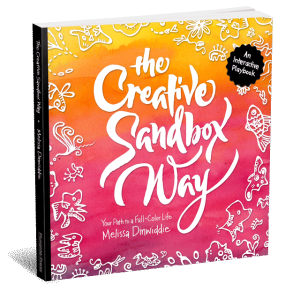

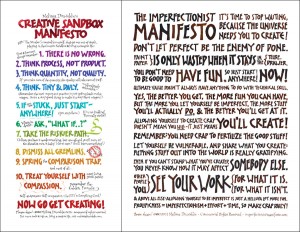 10 Tips to Bust a Creative Block: Download Your FREE Poster!
10 Tips to Bust a Creative Block: Download Your FREE Poster!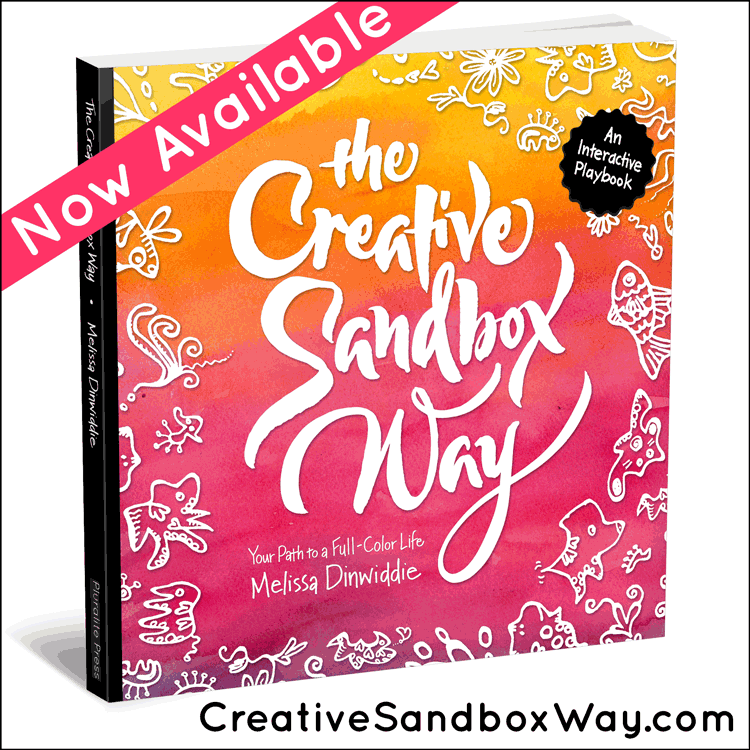



Even new products (esp. from cheap sources) often have no manual or only part of the manual. Recent new tv stand which now has a bag full of spare screws, nuts, and bolts in the parts drawer, which is filling up. I hit the net as soon as I realize no diagrams included for the tv mount part. Had to cannibalize part of the old wall mount to complete the project.